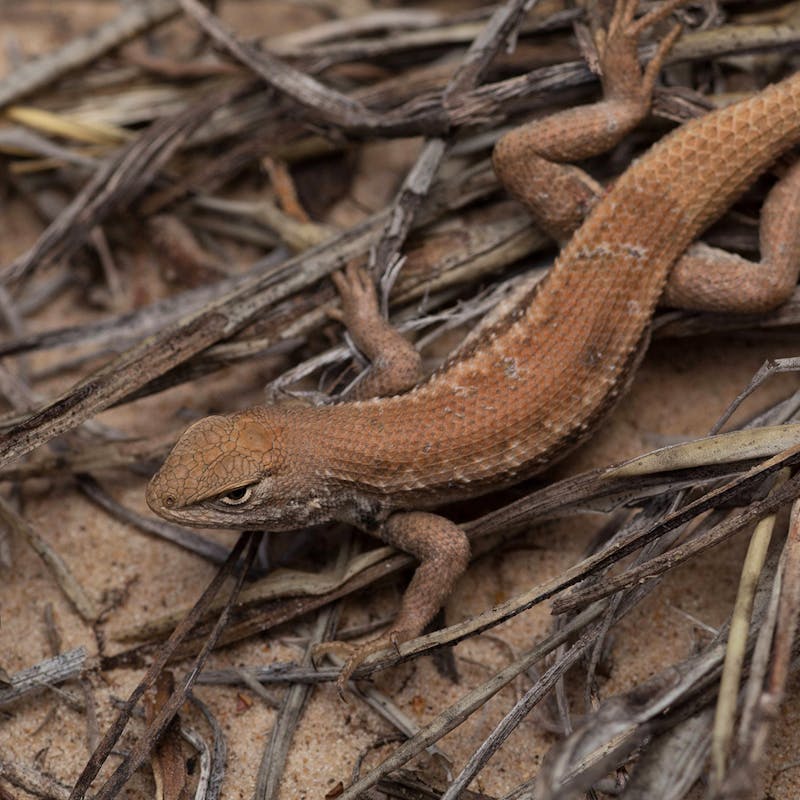In a long-awaited victory for the dunes sagebrush lizard, the U.S. Fish and Wildlife Service today announced the species will be listed as endangered under the Endangered Species Act.
“The dunes sagebrush lizard spent far too long languishing in a Pandora’s box of political and administrative back and forth even as its population was in free-fall towards extinction,” said Bryan Bird, Southwest director for Defenders of Wildlife. “This is a monumental step in providing this unique lizard, who’s only fault has been occupying a habitat that the fossil fuel industry has been wanting to claw away from it, a lifeline for survival. The Endangered Species Act is an overwhelmingly successful conservation law and we look forward to watching it work for the dunes sagebrush lizard as it has for so many other species.”
This announcement comes after years of litigation and advocacy from Defenders of Wildlife and its partner organizations which petitioned for the listing in 2018. The lizard was first identified as needing ESA protections in 1982 and was first proposed for listing in 2010. Political pressure from the oil and gas industry, which prizes the lizard’s habitat, blocked the listing from moving forward.
Rather than oppose industry, the FWS withdrew its original proposal and relied on voluntary conservation plans, which lacked sufficient rigor or enrollment to adequately protect the lizard.
For example, in 2012, FWS withdrew its proposed ruling in large part on the basis of a voluntary conservation plan created by the state of Texas. Texas later withdrew that plan due to its failure to adequately conserve the species. After refusing to approve a revised version of the state’s plan, FWS instead endorsed industry-created conservation plans that entirely failed to stop and reverse the lizard’s decline.
Dunes sagebrush lizards are found only in the Permian Basin in West Texas and southeastern New Mexico, the second-smallest range of any North American lizard, yet home to a major onshore oil and gas field.
This unique lizard has, unfortunately, faced habitat loss at alarming levels due to fossil fuel development and sand mining, as well as herbicide spraying from ranching operations. The dunes sagebrush lizard relies on shinnery oak sand duneland and is particularly susceptible to habitat fragmentation due to its narrow range. Scientific research suggests that once this habitat has been destroyed, it cannot be restored.
For over 75 years, Defenders of Wildlife has remained dedicated to protecting all native animals and plants in their natural communities. With a nationwide network of nearly 2.1 million members and activists, Defenders of Wildlife is a leading advocate for innovative solutions to safeguard our wildlife for generations to come. To learn more, please visit https://defenders.org/newsroom or follow us on X @Defenders.
Media Contact
News

Defenders Endorses Bills to Secure a Future Against Offshore Drilling



